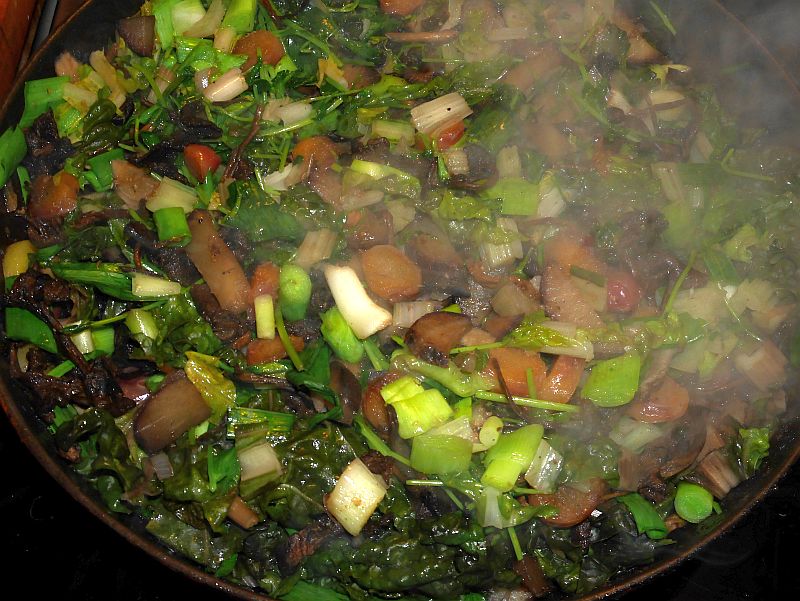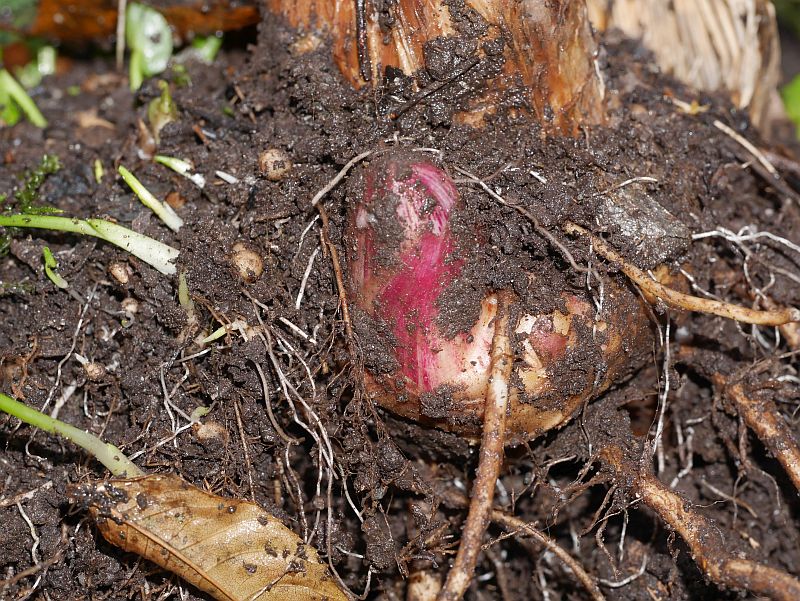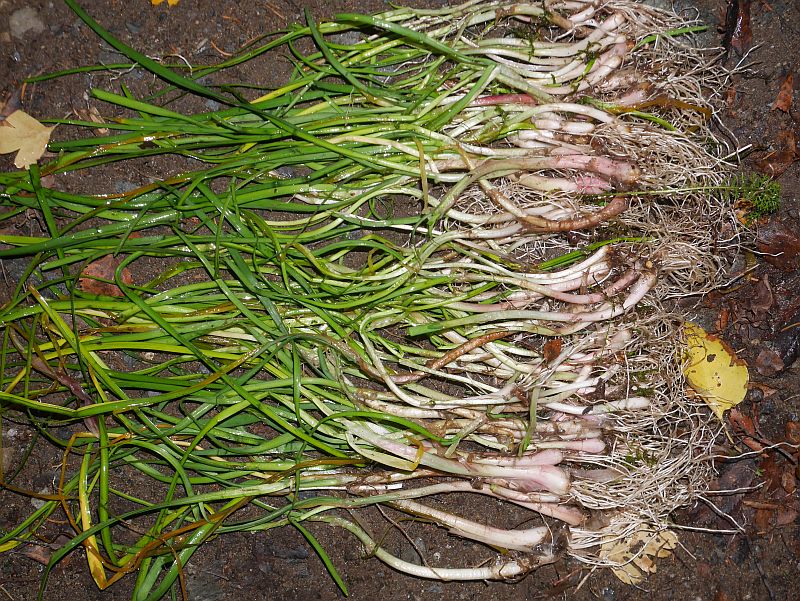Happy Dandy Lions forced in the living room, glad to have been invited into the warmth. Little do they know though that I had a cruel plan to put them into last night’s quiche!
Quiche is one of some 20 generic dishes I’ve evolved over the years for using perennial veg as there are no recipes for the veggies I grow. As always, we use coarse whole grain flour (organic emmer wheat and svedje rye flour). We also used forced Allium senescens onions and leeks and swiss chard from cold storage in the cellar as well as garlic and rehydrated winter chantarelles. Super tasty and healthy!


















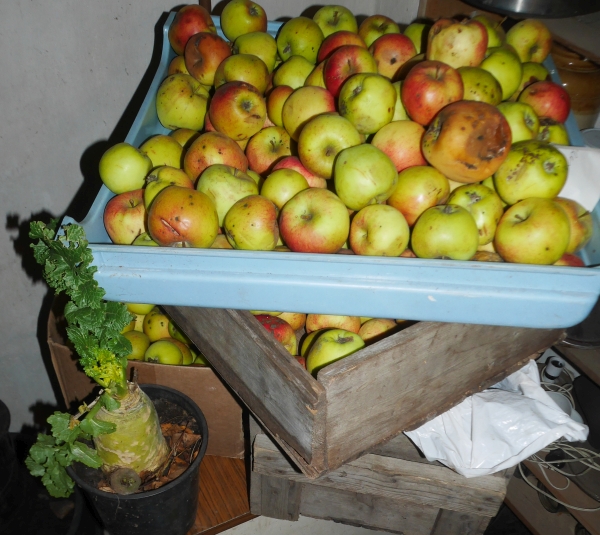














 Broad beans (bondebønner) and swiss chard (mangold)
Broad beans (bondebønner) and swiss chard (mangold) 

 Shallots (Finnish heritage variety) which were harvested in September 2022 are still looking good:
Shallots (Finnish heritage variety) which were harvested in September 2022 are still looking good: Sonchus oleraceus (common sow-thistle / haredylle), probably my most used veg at this time of year, even though most consider it a weed! WEEDS ARE TO FEED!
Sonchus oleraceus (common sow-thistle / haredylle), probably my most used veg at this time of year, even though most consider it a weed! WEEDS ARE TO FEED!




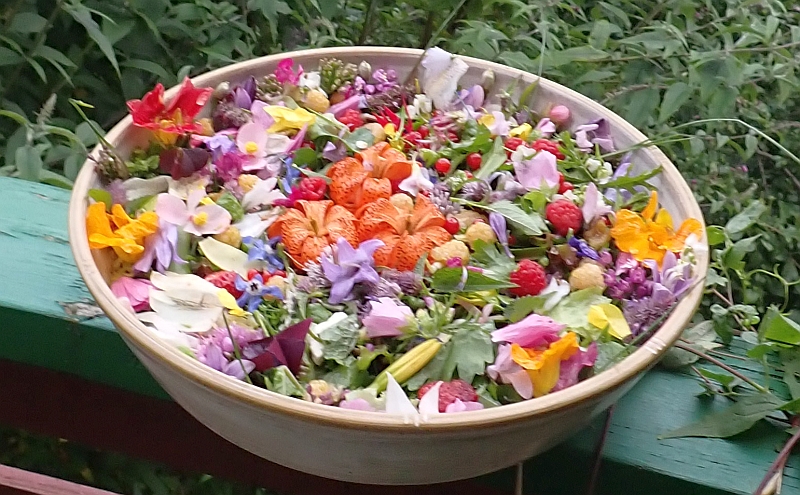


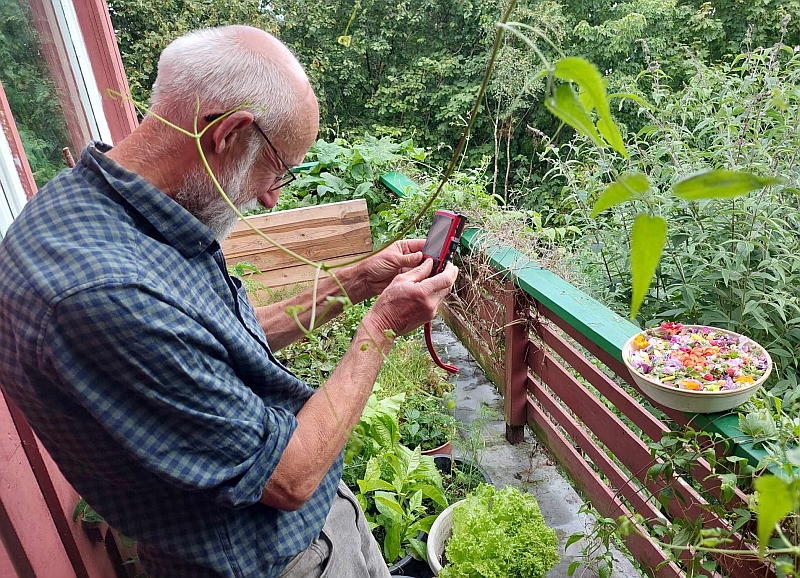

 CELLAR: Dystaenia takesimana shoots; Forced hogweed (bjørnekjeks) shoots (Heracleum spp.); Forced Taraxacum (dandelion / løvetann); nederst til høyre: Witloof chicory (sikkori); øverst til høyre: swiss chard (mangold)
CELLAR: Dystaenia takesimana shoots; Forced hogweed (bjørnekjeks) shoots (Heracleum spp.); Forced Taraxacum (dandelion / løvetann); nederst til høyre: Witloof chicory (sikkori); øverst til høyre: swiss chard (mangold)



